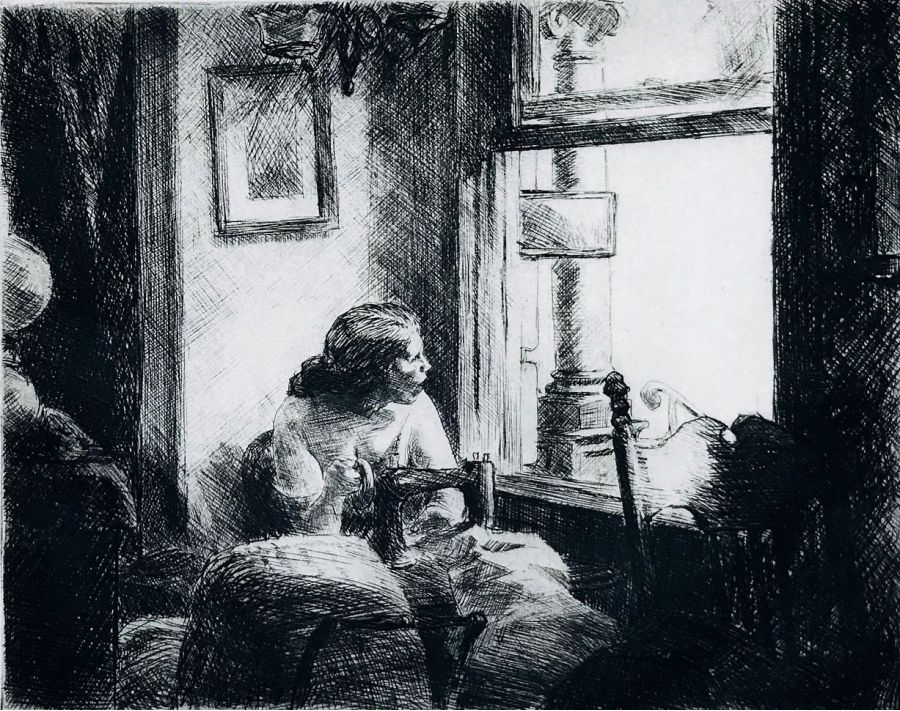East Side Interior. 1922. Etching and drypoint. Levin 85. 7 7/8 x 10 (sheet 11 x 13 1/4 inches. Remnants of brown tape, top margin verso; slight mat line; otherwise good original condition. A rich impression printed on Etruria Italian cream wove paper. Signed in pencil, lower right; titled verso, lower left. Illustrated: Fine Prints of the Year, 1927; Illustrated: Beall, American Prints in the Library of Congress: 221. Signed in pencil. Housed in a 17 x 18 1/2-inch modernist black wood frame.
![]()
Although Edward Hopper is best known for his oils and watercolors, his earliest artistic success came by way of his watercolors and etchings. He focused on printmaking from 1915 to 1923 to support himself through the early years of his artistic career. Hopper became an accomplished etcher, and it was his prints that first gained him public recognition. In East Side Interior, a young mother with a baby carriage sits at a sewing machine and gazes out the window. Hopper used the stark light from the window to animate the surfaces of the interior space and imbue the scene with dramatic tension. In 1956, Hopper wrote about the source of this etching as ". . . memories of glimpses of rooms seen from the streets in the eastside in my walks in that part of the city. No implication was intended with any ideology concerning the poor and oppressed. The interior itself was my main interest: simply a piece of New York, the city that interests me so much."



